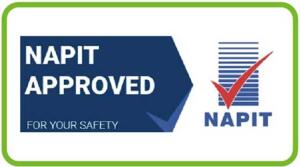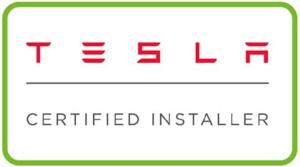PAS 63100:2024 – A New Standard for Fire Safety in Residential ESS Installations
Attention all residential photovoltaic (PV) installers! A significant update has been rolled out as of March 31, 2024, with the introduction of PAS 63100:2024, sponsored by the Department for Energy Security and Net Zero. This new standard provides essential guidelines for “Electrical installations – Protection against fire of battery energy storage systems (ESS) for use in dwellings.”
In this post, we’ll break down the key recommendations of PAS 63100:2024 and explain what they mean for residential PV installers and the safety of battery energy storage systems.
Understanding PAS 63100:2024
The PAS 63100:2024 standard addresses fire safety concerns associated with residential battery energy storage systems. As the adoption of renewable energy systems grows, ensuring the safety of these installations becomes increasingly important. This guideline specifically focuses on preventing fires caused by ESS systems and provides crucial recommendations on their installation.
Key Focus Areas of PAS 63100:2024
One of the most important aspects of the new standard is the recommendation against installing ESS units in roof spaces or lofts. These areas, often chosen for convenience and space considerations, present significant fire risks. Due to the confined nature of these spaces, any fire incidents could escalate quickly, causing extensive damage before help arrives.
Why Fire Safety is a Priority for ESS Installations
Battery energy storage systems (ESS) offer numerous benefits, including energy storage for later use, making homes more energy-efficient and sustainable. However, they do come with inherent risks, particularly related to fire. Factors like chemical processes, extreme temperatures, or electrical faults can trigger fire hazards.
In confined spaces like lofts, these risks are amplified, making fire containment more challenging. The PAS 63100:2024 guidelines aim to mitigate these dangers by recommending safer installation practices.
What the New Standard Recommends
Although PAS 63100:2024 is advisory and not legally enforceable, it sets out clear recommendations that all responsible installers should follow to ensure the safety and efficiency of ESS systems in residential settings.
- Avoid Loft Installations: The standard advises against installing ESS units in lofts or roof spaces, as these areas are harder to monitor and protect in case of fire.
- Choose Safer Installation Areas: Installers should consider alternative locations with better accessibility and fire containment capabilities.
Key Recommendations
- Avoid Loft Installations: The heightened risk of fire in loft spaces makes them unsuitable for ESS units.
- Choose Safer Locations: Install ESS units in areas with easier access for maintenance and monitoring. Outdoor installations may be preferable in many cases.
Alternatives to Loft Installations
With PAS 63100:2024 recommending safer alternatives, installers must now consider different installation options for ESS systems. Two common solutions include IP65 and IP66-rated enclosures, which are ideal for outdoor installations.
Understanding IP65 and IP66 Ratings
IP ratings (Ingress Protection ratings) define the level of protection an enclosure provides against dust and moisture. These ratings are important for ensuring the safety of ESS units against environmental hazards.
- IP65-rated enclosures: These units are dust-tight and can withstand water jets, making them suitable for most outdoor environments.
- IP66-rated enclosures: These offer a higher level of protection, capable of withstanding powerful water jets and more severe weather conditions, ensuring the safety of ESS units even in harsh conditions.
Both options are ideal for residential outdoor installations, as they prevent moisture ingress and other environmental risks that can lead to electrical failures or fires.
Implications for Residential PV Installers
For installers, PAS 63100:2024 means a shift in installation practices, particularly when it comes to choosing installation locations for ESS units. This requires:
- Site Assessment: Installers must evaluate suitable external locations that are safe, accessible, and have minimal exposure to extreme weather conditions.
- Infrastructure Modifications: Additional structural considerations may be necessary to accommodate ESS units securely.
- Customer Communication: Installers will need to educate homeowners on the safety benefits of these changes and the long-term advantages of safer ESS installations.
Adjusting to New Installation Practices
This update will require residential PV installers to adapt their traditional installation methods. Moving ESS units outdoors may involve more planning and modifications, but these changes are essential for ensuring safety.
The Broader Impact on the Industry
Adhering to PAS 63100:2024 does more than just improve fire safety—it also contributes to the broader goals of reducing greenhouse gas emissions and promoting sustainable energy use. By installing ESS units in safer, more controlled environments, we can continue advancing towards a cleaner and safer energy future.
By embracing these safety guidelines, the industry not only enhances its credibility but also strengthens its commitment to sustainability.
Conclusion
The introduction of PAS 63100:2024 marks a critical shift in how residential ESS systems are installed and maintained. For residential PV installers, adapting to these guidelines is an opportunity to prioritize safety and efficiency, safeguarding homeowners and properties while staying ahead of industry standards.
Although these guidelines are advisory, they should be followed closely to reduce fire risks and promote the long-term safety of energy storage systems. As the renewable energy industry grows, it is essential that safety remains at the forefront of our practices.
For PV installers, understanding and implementing these changes will not only ensure compliance but also help build trust with clients, contributing to a safer and more sustainable energy landscape.
Relevant External Links
- PAS 63100:2024 – Fire Safety for ESS Installations
Access the full PAS 63100:2024 standard document or register with the British Standards Institution (BSI). - Department for Energy Security and Net Zero
Explore the UK government’s resources on energy security and net-zero goals. - Health and Safety Executive (HSE) – Electrical Safety in the Home
Read the HSE guidelines on electrical safety, which includes information relevant to ESS installations and fire safety. - National Fire Chiefs Council (NFCC) – Fire Safety Advice for Energy Storage Systems
Visit the NFCC for fire safety advice regarding energy storage systems in residential settings. - Renewable Energy Association (REA) – Energy Storage Guidelines
Access best practices and guidelines from the REA for energy storage system installations.
Frequently Asked Questions
What are the specific steps for installers to transition from loft to outdoor ESS installations?
For residential PV installers, adapting to outdoor installations involves assessing suitable external locations that provide safety, are easily accessible, and are minimally exposed to extreme weather conditions. Installers will need to evaluate the structural requirements of different sites, considering factors like surface stability, potential flood risks, and security against theft or vandalism. Additionally, installers must understand the technical specifications required for IP65 or IP66-certified enclosures to ensure proper protection against environmental factors. This transition will also require adapting the wiring and connectivity solutions to suit outdoor conditions, potentially involving more robust weatherproofing measures.
How can installers effectively communicate these changes to homeowners?
Effective communication with homeowners is crucial as installers need to explain the reasons for moving ESS installations from lofts to outdoors. It’s important to highlight the safety benefits, such as reduced fire risks and enhanced emergency accessibility. Installers should also emphasize the long-term reliability and efficiency gains from such installations, which can be more appealing under adverse weather conditions. Providing clear, concise information and possibly visual aids or diagrams to illustrate the benefits and setup of the new installation sites can help in gaining homeowner approval and satisfaction.
Are there any incentives or support programs available to help cover the additional costs associated with these new installation guidelines?
Regarding financial assistance for adapting to these new guidelines, installers should be well-informed about any local government or industry-sponsored incentives. Many regions offer subsidies, grants, or tax rebates for implementing renewable energy solutions that comply with the latest safety standards. Engaging with local energy boards, renewable energy associations, or checking government websites for updates on renewable energy incentives can provide crucial information that installers can pass on to homeowners to help offset the initial higher costs of outdoor ESS installations.











